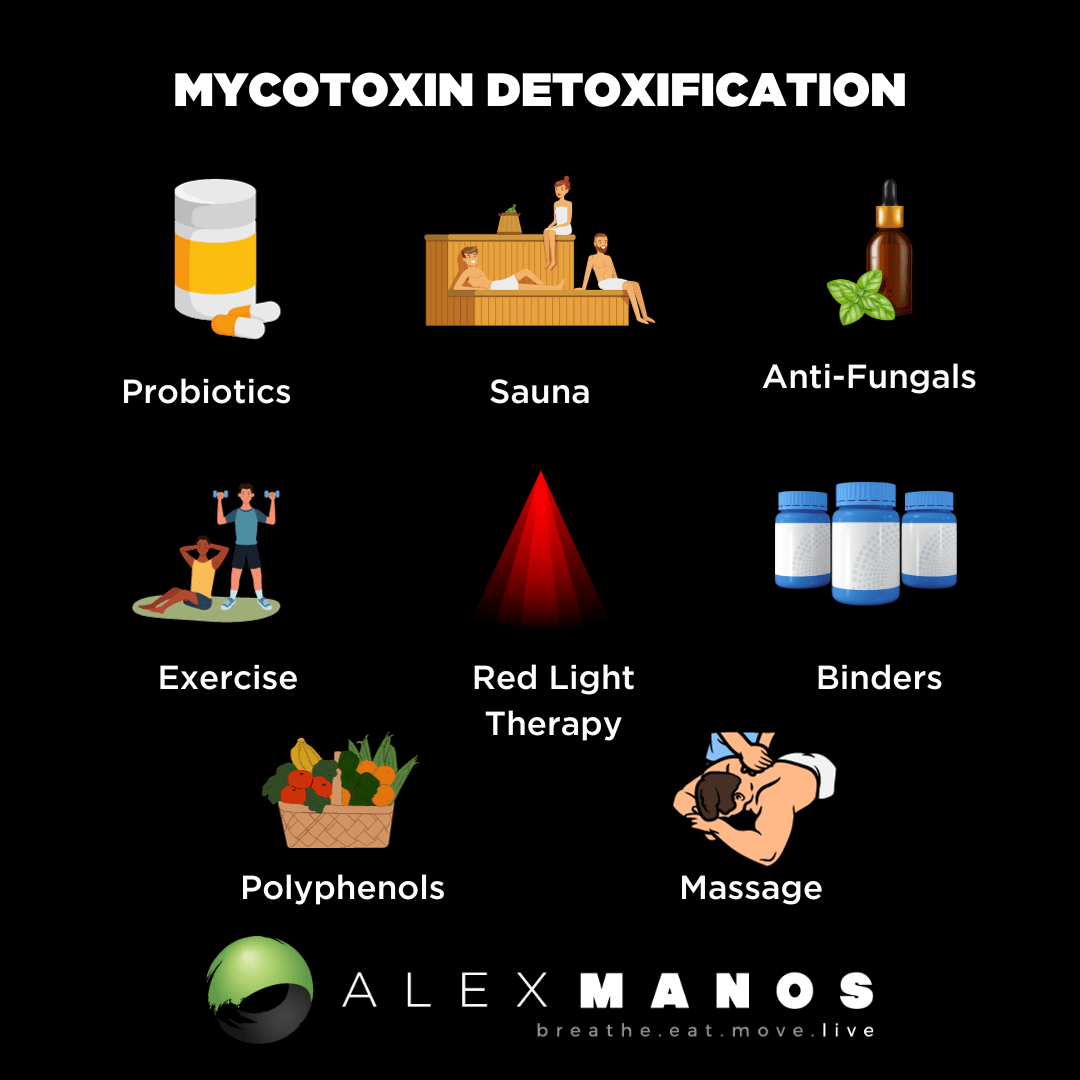Welcome to my blog post ‘Mycotoxin Detoxification Treatment: A Case Study In Functional Medicine’. This blog assumes you are up to speed with what mycotoxins are, the signs and symptoms of mycotoxin illness, and how to test for them. If not, you may also be interested in the section of my blog dedicated to mycotoxins, click here, in particular:
- Mycotoxin Testing What You Need To Know
- Can Mould And Mycotoxins Cause Chronic Fatigue Syndrome?
- Can Mould And Mycotoxins Cause Gut Problems Such As IBS?
This blog summarises a paper which was published in Toxicology and Industrial Health which details twenty-eight incapacitated individuals who were exposed to molds and mycotoxins, and were then treated and followed to evaluate efficacy of the program.
How Were They Tested For Mycotoxins?
The patients were diagnosed by history, physical, urine, and analysis of sputum and sinus, and nasal secretions.
How Do You Treat Mycotoxins?
The treatment of mycotoxicosis is extremely difficult because both the individual and the individual’s environment must be treated for a successful result.
This treatment starts with reducing the total environmental load and the total body load of moulds, mycotoxins, and toxic chemicals. The treatment can be categorised as:
- Nutritional therapy.
- Sauna therapy.
- Exercise and massage.
- Anti-fungal drugs.
- Cholestyramine and activated charcoal.
Total environmental load was reduced by professional cleaning of the building involved. Mold cultures were taken before and after the cleaning. Forty percent of the patients had to leave the building permanently because even after the cleaning and negative mold plates, they still could not tolerate the building.
Total body load was reduced by having the patients drink less polluted glass bottled spring water and eat organic food with a rotary diet so that the patient would not eat the same food more than once in 4 days. The patients would avoid any food to which they were sensitive. The patients had to move out of the contaminated building where they lived or worked until it was deemed acceptable to them.
Supplements For Mycotoxin Treatment
Nutritional supplementation were given orally consisting of:
- Vitamin C, 6000 mgm daily.
- B1,2,3,5,6 100 mgm daily.
- B12 1000 mcg two times per week
- Folic acid 1 mgm two times per week.
- Vitamin D3 400-1200 units per day.
- Natural vitamin E 400- 1200 IU daily.
- Vitamin A 5000 units daily.
Care must be taken to define the source, such as, corn, potato, beet, tapioca, soy, yeast, etc. Any vitamin that the patient could not tolerate was eliminated.
Minerals were given daily, including:
- Calcium citrate 1000 mgm.
- Magnesium citrate and aspartrate 500 mgm.
- Zinc picolinate or orotate 300 mgm.
- Potassium citrate and aspartate 99 mgm.
- Magnesium gluconate 10 mgm.
- Copper gluconate 2 mgm.
- Selenium methionine 200 mg.
- Chromium 200 mgm.
- Molybdenum 200 mgm.
Essential and semi-essential amino acids (600- 2000 mgm) were given daily including:
- L-tryptophan, lysine, leucine, isoleucine, cysteine, valine, threonine, methionine, arginine, and glutathione.
Lipids as a source of omega 3 and 6 EPA plus DHA were also given daily. Either three capsules or three teaspoonfuls were used. Salmon oil, cod oil, flax oil, primrose, borages, or black current oil was administered.
Sauna Therapy For Mycotoxins
Heat depuration was preferred in environmentally controlled saunas either conventional or infrared, whichever the patient could tolerate. Sweating of 20-30 min was allowed; and 20-30 min on an ‘exercycle’ was followed by 20 min of deep massage – all performed under environmentally controlled condi- tions.
What Was The Outcome?
All 28 patients completed the study. Ninety- five percent of the patients improved with treatment being able to return to normal function. In all, 24% patients had elevated tricothecene mycotoxins; 80% returned to non-detectable at the end of the study; 6 had elevated aflatoxin and 100% became non- detectable; and 2 had increased ochratoxins and both returned to normal.
An absolutely brilliant book is by Dr. Jill Crista available on Amazon here.
Summary
- Work with an experienced practitioner in mould illness and mycotoxins.
- Get testes so you can monitor treatment.
- Speak with you practitioner to discuss supplementation that can include nutritional changes, supplementation, exercise, sauna therapy and massage (among other things!) .
References For ‘Mycotoxin Detoxification Treatment: A Case Study In Functional Medicine’:
- The treatment of patients with mycotoxin-induced disease: click here


